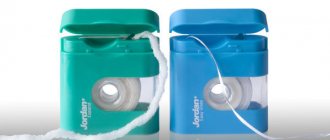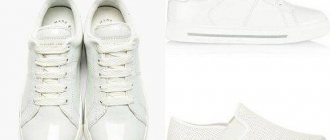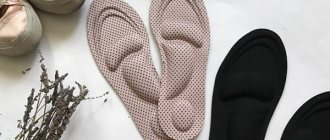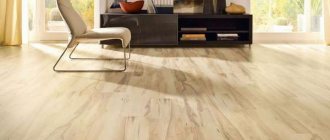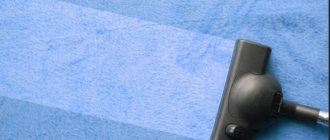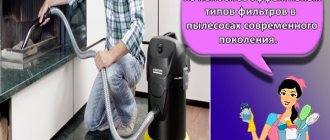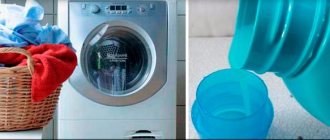Fecal coliform bacteria remain in the bathroom and are scattered throughout the room after the toilet user flushes; they can be a source of illness. You can get rid of the threat only with constant cleaning using antiseptics, but even this does not provide one hundred percent protection: particles can remain on door handles, combs and even toothbrushes.
In addition, devices for cleaning the mouth are already a breeding ground for pathogenic bacteria that remain after contact with the mucous membrane - in the future they can also cause infection. This is why it is so important to take care of their disinfection - we tell you how to approach the matter correctly.
Wash your hands before and after brushing your teeth
Bacteria and viruses are mainly transmitted through the palms - throughout the day they come into contact with many surfaces that are not always sterilely clean.
To stay safe during and after brushing your mouth, you should rinse your hands with soap and water for 20 seconds to remove any particles that might be left on the brush handle. After the procedure, you should also wash your palms to be on the safe side. In an interview with Insider, William Martin, president of the Maryland Dental Association, said that hand rinsing should, in principle, be a basic activity of every person - it will help reduce the risk of contracting viruses and infections, as well as minimize contamination of surfaces that a person touches.
What characteristics of an electric brush need to be taken into account?
Before purchasing a brush, you should consult with your dentist, since the condition of your teeth and gums determines the requirements for the properties of the model you are using.
Bristle
The bristles should be made of synthetic materials, such as nylon. Natural fibers may have hollow parts where bacteria can accumulate over time. The stiffness of the bristles is selected by the doctor individually. Without his recommendation, you should not use brushes with hard bristles. Soft and very soft bristles are recommended for patients with sensitive enamel and gum problems, as well as for children. For the rest, medium-hard bristles are suitable. Particular attention should be paid to the tips of the villi. For more delicate care they are made rounded. Pointed bristles can scratch tooth enamel.
Battery or batteries
Battery-powered electric brushes lose power as their charge decreases. Therefore, the effectiveness of this tool may gradually decrease. In addition, when buying it, the user also acquires the need to constantly spend money on batteries. The battery allows you to control the charge level before each cleaning and does not require additional costs.
Handle and weight
It is better to choose a curved handle made of non-slip materials. The weight of the device should not strain your hand during the 3-5 minutes spent cleaning the entire oral cavity. It is especially worth paying attention to these characteristics when choosing a brush for children.
Number of nozzles
Several interchangeable cleaning heads allow you to use one electric brush for all family members. For example, buying a set of Glister™ Smart Sonic electric toothbrush and spare brush heads is cheaper than purchasing several separate accessories for the whole family.
Noise
The vibrations of electric brushes do not produce loud sounds. But those with sensitive hearing may experience discomfort from even a slight buzzing sound. In this case, you should opt for silent ultrasonic models.
Additional functions
The latest models of electric toothbrushes are equipped with features that allow you to improve the process of brushing your teeth. The most common among them:
- a timer that beeps when it is time to move to the next area in the oral cavity;
- a pressure sensor that warns when to reduce the pressure on the cleaning head;
- compatibility with a mobile application that allows you to evaluate the result of the procedure and configure the operating mode of the device.
This application was created for the Glister™ Smart Sonic electric brush. It:
- offers one of five operating modes depending on the condition of the teeth and eating habits;
- detects cleaning time;
- shows which area needs special attention.
Learn how to properly store your toothbrush
The American Dental Association says it should be rinsed thoroughly under running water to remove any food, toothpaste, or tartar. After this, you should leave the brush to air dry in a vertical position - most bacteria die in an aerobic (oxygen) environment.
It is important to store the brush not in a case or small container, but in a spacious place, for example, a cabinet next to a mirror: the fact is that pathogenic particles may remain on the boxes for the device. Also, the brush should be left as far as possible from the toilet and be sure to close the lid before flushing it. You should also avoid leaving multiple brushes nearby, as germs can spread when they come into contact.
How often to disinfect
Do you need to clean your toothbrushes often? No. If you wash them in hot water after each use and store them properly (away from the toilet), you can clean them about once every month or so. Hot water from the sink really helps remove potentially dangerous germs.
Frequency of toothbrush cleaning
Sanitation vs. Sterilization
When shopping for toothbrush sanitizing products, it is important to understand the current lingo. The concept of "disinfect" means to remove disease or infection, but the rate of this process in each individual case can vary greatly. “Sanitation” means reducing bacteria by 99.9 percent. “Sterilization” is the process of destroying all living organisms. It is important to know that there are currently no commercially available toothbrush cleaners that can sterilize or sanitize them. Don't believe promises of complete destruction of all bacteria, because this is just a marketing ploy.
You can buy toothbrush cleaner, but no evidence suggests that these products clean them any better than plain water and drying. If you decide to purchase a sanitizer, look for a product that has been approved by the Food and Drug Administration.
Toothbrush
The bad news is that germs are everywhere and there is no escape from them. The good news is that most of them are actually incapable of harming us. So, don't try too hard to change your toothbrush routine, if at all. Most people have very little chance of ever getting sick from their own toothbrush. Read about waxed dental floss on our website.
Disinfect the brush
If you want to take extra precautions, or if you dropped the device on the floor, you can use hydrogen peroxide or mouthwash.
The first solution is a good antiseptic that destroys harmful particles picked up by the brush from the ground. The second contains alcohol, menthol and eucalyptol, which also help get rid of bacteria. To do this, rinse the bristles under running water, pour a little antiseptic into a glass - enough to cover the brush head, and soak the device for 10-15 minutes. Afterwards, rinse it again and leave it to dry in the open air.
Read on topic:Why and how to cleanse makeup products
Use ultraviolet light
According to a study published in the American Journal of Dentistry back in 2008, UV light kills bacteria and some viruses by disrupting their molecular bonds. It also found that light was slightly less effective than alcohol or peroxide, but if you have an ultraviolet lamp on hand, this is a good way to use it.
Leave the brush next to it for a few minutes, then air it out in the open air. We do not recommend using a dishwasher or microwave as an alternative - the high temperature inside the equipment can damage the brush or even melt it.
Keep your brush safe while traveling
To ensure that it does not become a breeding ground for bacteria, get a separate case or cosmetic bag where only the cleaning device will be stored.
Upon arrival, unpack your things, leaving the brush in the bathroom and rinsing it first. Before you leave, rinse it, dry it thoroughly, disinfect the storage case and place the brush in it.
Proper use is important
Following good personal hygiene will not only keep your teeth healthy, but will also minimize the risk of bacteria colonizing your toothbrush. For it to serve faithfully, it is necessary:
- Use only a separate, personal brush. The oral cavity of every person is teeming with billions of bacteria. At the same time, everyone has their own microflora, which is in harmonious coexistence with the body. When someone else's microflora gets into another person's mouth, the result can be unpredictable. To protect themselves from diseases, all family members, including husband and wife, should have personal brushes.
- Brush your teeth regularly in the morning and evening for 5-6 minutes. Timely cleaning helps suppress the proliferation of microbes in the oral cavity. Accordingly, there are fewer of them left on the brush.
- Choose the right bristle stiffness and toothpaste. The less bacteria in your mouth, the cleaner your stubble remains. The correct selection of toothpaste and brush guarantees complete cleansing of teeth from plaque, in which pathogenic microorganisms live.
- After each meal, use dental floss and mouthwash. Brushing your teeth 3-4 times a day is practically impossible physically, and is also traumatic for tooth enamel. However, to prevent food debris from rotting between the teeth, they must be removed and washed off with mouthwash.
- Change your toothbrush every 3 months. Numerous studies have confirmed that within 90 days the brush is colonized by pathogenic organisms from the oral cavity. Even high-quality disinfection does not destroy them. In addition, during this period, with regular use, the bristles wear out, and they can no longer properly clean the teeth.
- Buy a new brush after an infectious disease or professional teeth cleaning. Antibodies fight infection in the body. But pathogens survive well on a toothbrush, so it is recommended to change it after an illness. As for professional sanitation, it destroys 99.9% of harmful microorganisms in the mouth. To ensure that the cleaning result lasts as long as possible, it is better to throw away the old hygiene item with bacteria or give it a second life as a device for cleaning hard-to-reach surfaces.
We recommend: Effective savings: choosing and installing an aerator on the faucet in the bathroom and kitchen
